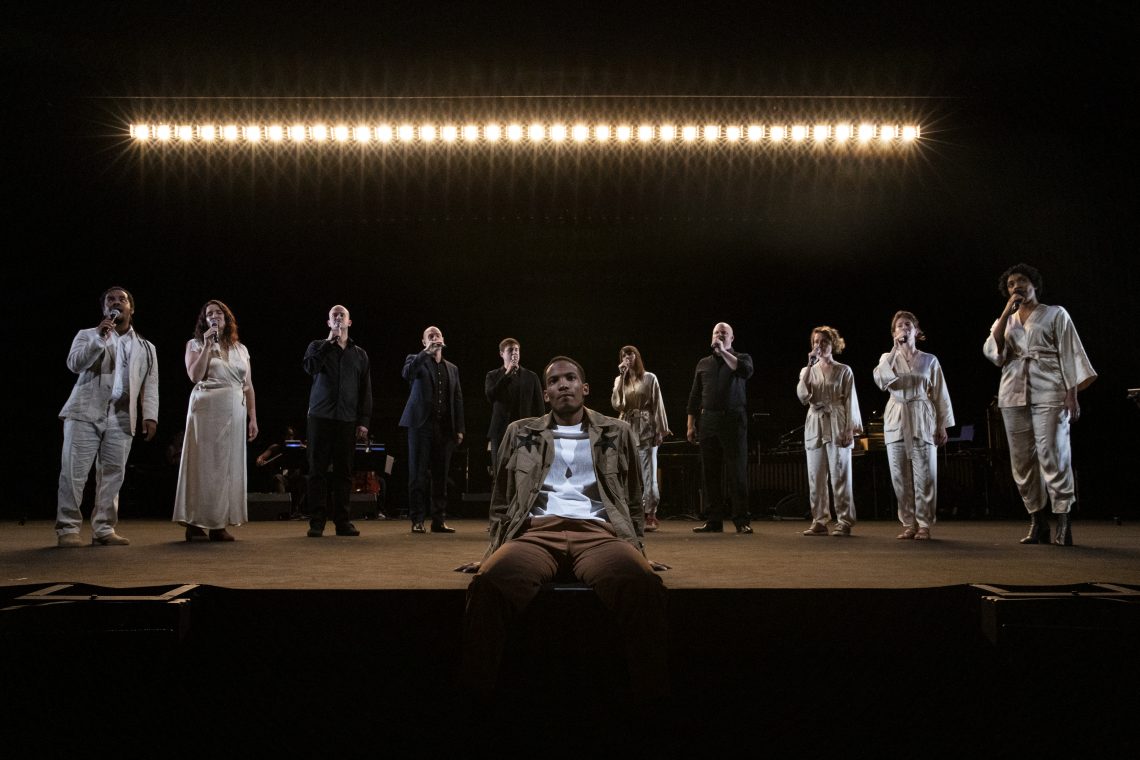
Stanford Live presents a genre-bending musical performance exploring beauty and aesthetics in Robert Mapplethorpe’s photography
"Triptych (Eyes of One on Another)" Oct. 3, 2019, in Memorial Auditorium
Marking 30 years since the death of groundbreaking photographer Robert Mapplethorpe, Triptych (Eyes of One on Another) explores the origins and impact of Mapplethorpe’s controversial photography. This staged musical work produced by ArKtype / Thomas O. Kriegsmann combines orchestra, vocal ensembles, theater, poetry, and photography to re-examine notions of obscenity, race, and aesthetics that Mapplethorpe himself challenged during the Culture Wars of the 80s and 90s.
“In a season that examines the relationship between art and politics, Mapplethorpe is an obvious figure to investigate,” said Chris Lorway, Stanford Live’s executive director. “And using a contemporary lens to examine his work adds an additional layer of complexity to his legacy in the art world.”
Composed by classically trained composer and The National band member Bryce Dessner and directed by award-winning theater artist Kaneza Schaal, Triptych offers a contemporary response to the work of Mapplethorpe. Musical and theater pieces from librettist korde arrington tuttle, the vocal ensemble Roomful of Teeth, and the San Francisco Contemporary Music Players are set against large-scale projections of Mapplethorpe photographs and poetry from his contemporaries Patti Smith and Essex Hemphill.
The collaborations comprising Triptych are unusual. Yet the piece’s theatrical experimentation would not be as complex if it weren’t for the multi-genre and cross-cultural artists bringing to the 3-part piece a variety of perspectives and questions about Mapplethorpe’s body of work.
“Some of our curiosities and desires overlap, some diverge,” said Schaal. “As the director, I am arranging this tapestry, seeing to it that it doesn’t tear. What better materials from which to address a figure like Robert Mapplethorpe.”
Each section of Triptych offers a way of seeing Mapplethorpe photographs. In section one, Dessner interprets the photographs from a compositional lens, focusing on influences from Italian Mannerism, the late Renaissance style that informed Mapplethorpe’s approach to photography.
The choice itself of Dessner to compose Triptych poses a challenging artistic conflict—to create a score that addresses a body of work’s homosexual and racial frames. However, Dessner carries a historical and personal perspective. As a teenager in Cincinnati, he witnessed the obscenity trial that took the national stage over the Contemporary Arts Center’s exhibition of Mapplethorpe photographs. Dessner revisits the trial to compose the second section, contemplating the larger implications of art under government scrutiny.
Schaal, who grew up in San Francisco in the 80s, also brings a personal connection to Triptych. While she and her mother were living at her aunt’s home, Schaal recalls a social group around her aunt and her partner. In that group were ten gay men. By the time Schaal was six years old, eight were dead.
“I remember the smell of bodies dying, the quilt, the sweetness, and fear, and pounding grief,” Schaal said. “We are holding a lot of ghosts in Triptych. We all bring our own ghosts to this work. Ghosts whose names made it into archives and many whose didn’t. I am always drawn to projects which address the presence of the absent.”
Tuttle’s decision to include Hemphill’s poetry in the third section of Triptych places Mapplethorpe’s work under another gaze. Hemphill, a crucial voice on race and sexual identity in American poetry, criticized Mapplethorpe’s work, arguing that the photos perpetuated the centuries-long exploitation and objectification of black bodies.
This is the purpose of Triptych, to invite public dialogue about the multiple gazes that can coexist with the pull of beauty in Mapplethorpe’s work—to push on what constitutes beauty, who defines it, and who is alienated in the process.
